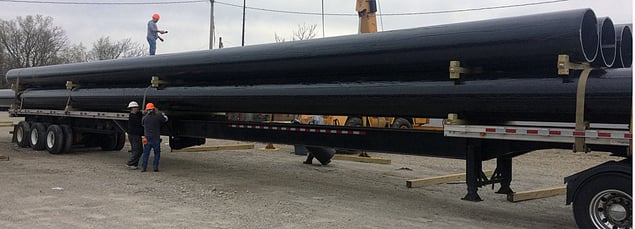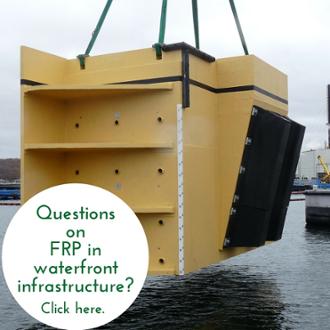 We’ve all heard the phrase "less is more." Robert Browning used it first in an 1855 poem, but it was architect Ludwig Mies Van Der Rohe who made it famous. Mies, a founder of the modern architecture movement, believed “simplicity and clarity lead to good design,” and he reflected this in his life's work. In marine applications, the "less is more" concept can be applied to pipe piles - one large diameter FRP pipe pile can do the work of several small diameter piles. Here's why it works.
We’ve all heard the phrase "less is more." Robert Browning used it first in an 1855 poem, but it was architect Ludwig Mies Van Der Rohe who made it famous. Mies, a founder of the modern architecture movement, believed “simplicity and clarity lead to good design,” and he reflected this in his life's work. In marine applications, the "less is more" concept can be applied to pipe piles - one large diameter FRP pipe pile can do the work of several small diameter piles. Here's why it works.
What's a large diameter pipe pile?
Pipe piles are the preferred product for driving foundations in dense soil and rock. Pipe piles come in different materials, primarily steel, concrete and fiberglass, and sizes ranging from eight inches to 120 inches.
The biggest benefit of pipe piles is found in simple geometry. The larger the diameter; the higher the sectional properties; especially bending capacity. Loading conditions resulting in high moments call for high bending capacity. Applications that require piles with length also demand larger diameters with high bending stiffness (EI) properties to avoid buckling.
How is less more?
Oftentimes, a group of small diameter piles, referred to as a dolphin, are used for fender applications. Typically, it's more cost effective to replace a group of small diameter piles with a single large pile. Large diameter piles reduce both equipment and labor time. As a result, installation is faster. Projects can are completed in a shorter time frame, saving the owner money.
FRP large diameter pipe piles offer superior design properties for engineers, which can reduce a contractor’s installation time. And most importantly, the owner gets a superior system at the lowest possible cost. Everyone wins.
In short, less really is more!

